Street Art is becoming more and more not only tolerated but also actually recognized and promoted – not exclusively in Rio de Janeiro. All over South America, Street Art has a long tradition – as a medium where colors give people a voice.
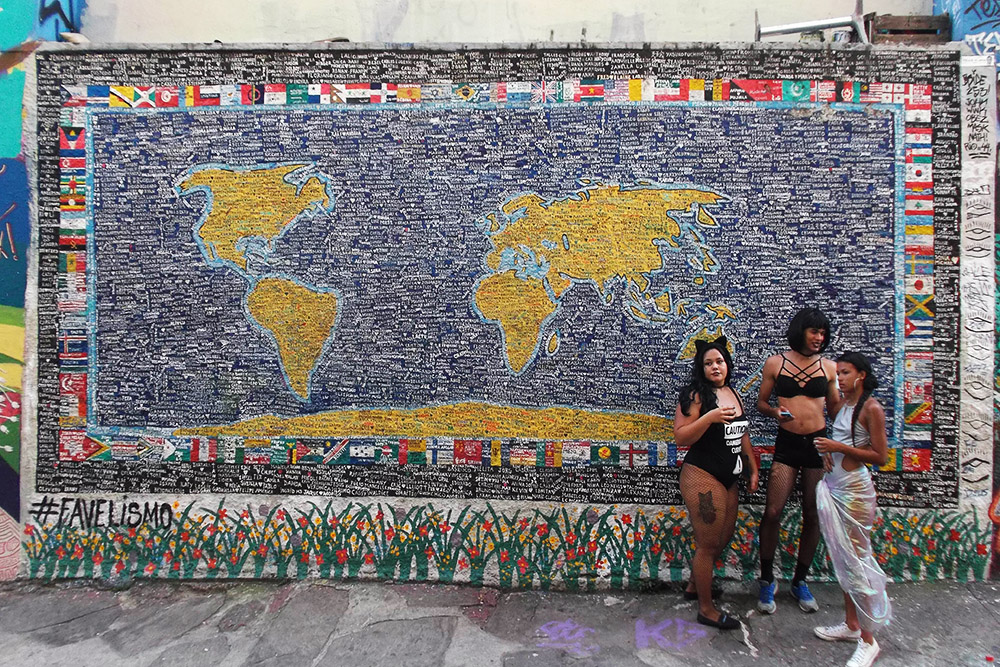
I’m introducing Rita Wainer, Eduardo Kobra, and Jorge Selarón, three of the greatest urban artists that left ineradicable traces in Rio de Janeiro.
Street Art: The Voice of Colors
Street Art is, obviously, artwork in public locations where the artist does not only speak his mind, but often also for his or her people. Today, also private property owners and investors are commissioning pieces. However, many muralists are still working illegally. Therefore, some artists choose to remain anonymous or work under a pseudonym. The most famous enigmatic urban artist is undoubtedly Banksy from the British city of Bristol.

Street Art such as murals did not derive from graffiti. Just think of Mexican muralists like Diego Rivera who created murals long before the invention of spray cans. However, both are often connected and combined. Especially the illegally working artists are using spray paint, stencils, posters, and stickers. This way, they can quickly apply their piece – long before the cops enter the scene.
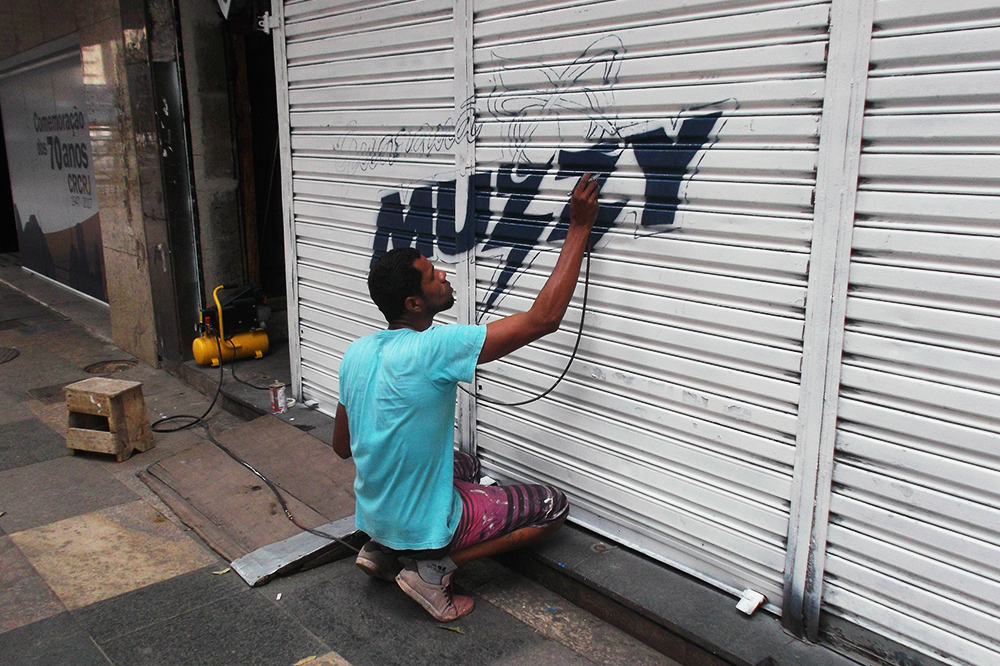
Street Art often carries a social or political message – and sometimes it just doesn’t – especially when private investors commission the pieces. Is this a sellout? I don’t know. Obviously, there are different approaches to urban art.

I personally enjoyed the urban art in Colombia the most since it is wild, anarchistic, angry, and rebellious. Compared to Bogotá, much of Rio’s street art is quite tamed; nevertheless, beautiful and exciting. So let me tell you the story of three ingenious artists.
Rita Wainer
Rita Wainer, obviously one of rather few women active in urban art, was born in 1978 in São Paulo. Brazil‘s most populated city is the cradle of ingenious artists and consequently a hub for phenomenal art. She already was a highly aspiring Brazilian fashion designer when she decided to move to Rio de Janeiro in 2013. At the same time, she gave up soft fabric for hard bricks and rough earth, hence, she became a visual artist.
Come to think of it, the step is pretty congruent since fashion can totally be considered urban art.
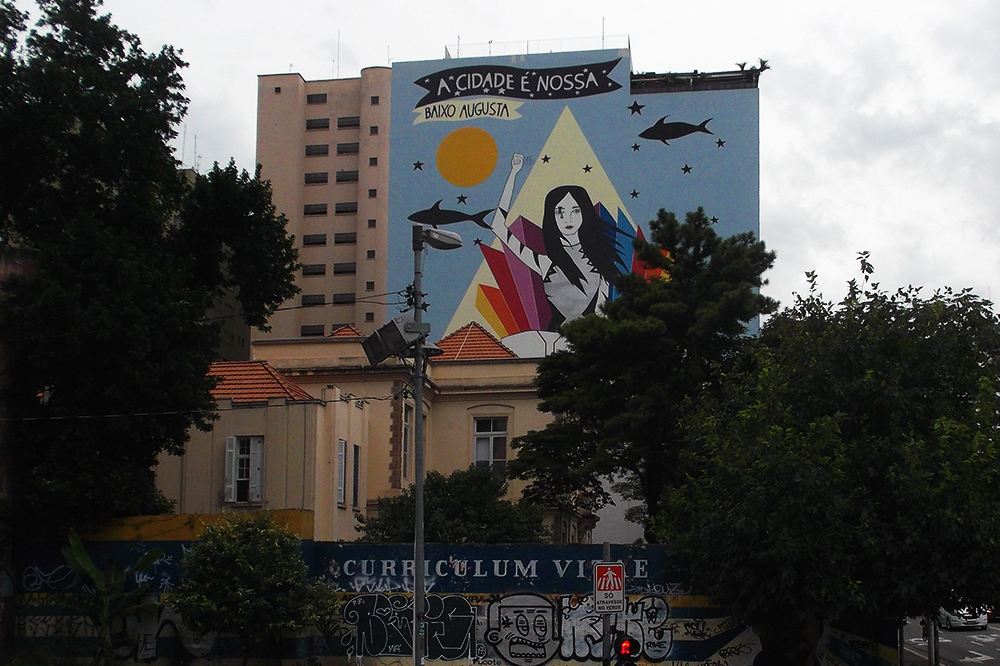
In January 2013, Rita opened her internet store where she’s selling her sculptures. She does so straight from her ample flat close to the Copacabana. Without any middlemen, but with great success. Already during the first three years, she had sold 1,000 pieces – or as she puts it in an interview: Pelé’s thousand goals.
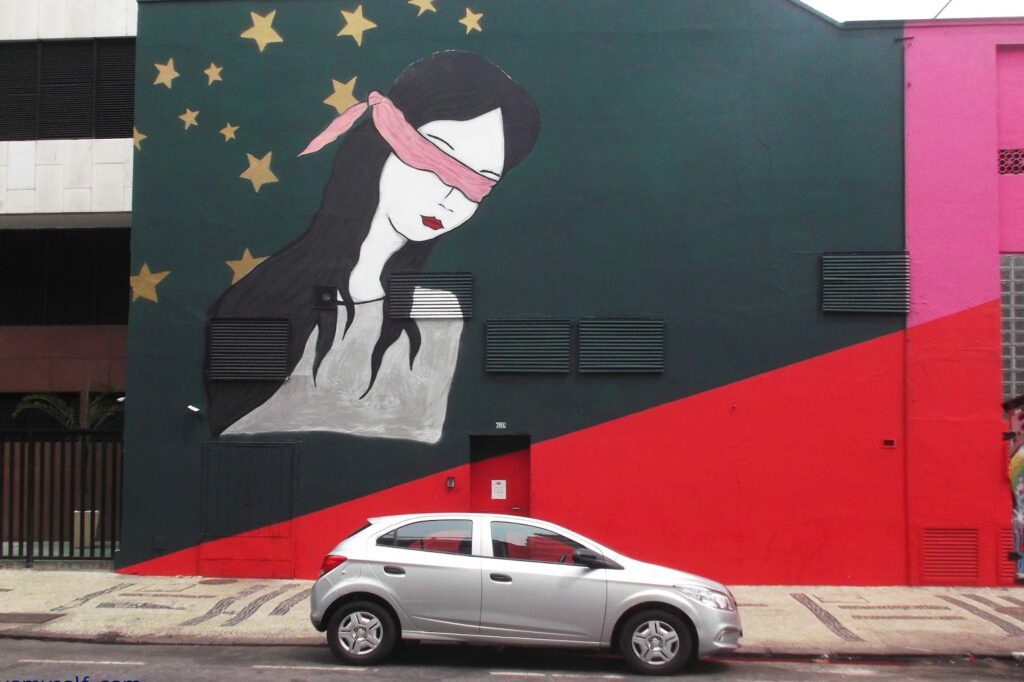
The resourceful variety of her works – illustrations, painting on tiles and places – and, of course, walls – is less surprising when you look at her hyper-artistic genealogy.
The Cradle of Creativity
Everybody in Brazil knows some Wainers. Whether it’s Rita’s mother, the artist Pinky Wainer. Or if it’s her grandparents, the actress and model Danuza Leão, and her husband, publisher Samuel Wainer. And this is only her very close family.
Keeping up with the Wainers?
No way. Obviously, Rita follows her own path. She does not want to be just an idle clanswoman with a golden spoon in her mouth.

Although Rita Wainer’s murals are just one niche of her artistic activities, for obvious reasons, it’s the most conspicuous.
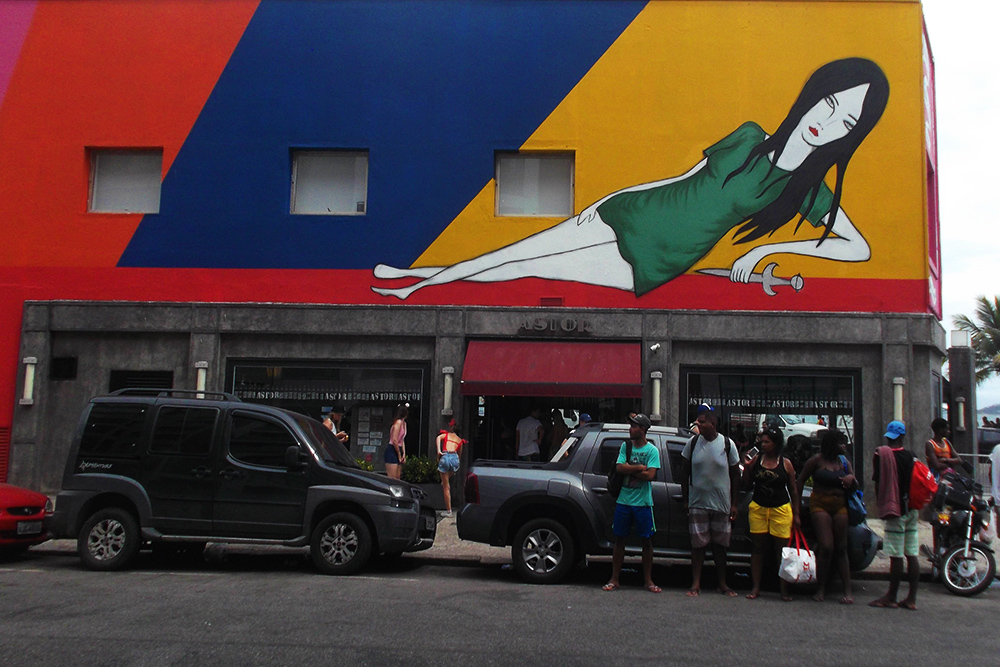
She’s painting girls. Skinny girls in bold, unshaded colors. Fragile beings with serious facial expressions. As they look at you, their glance is piercing – hardly any expression.
Often, they even don’t look at you but turn their head away from the beholder in oblivion. Maybe it’s haughtiness. Undoubtedly it’s never fear.
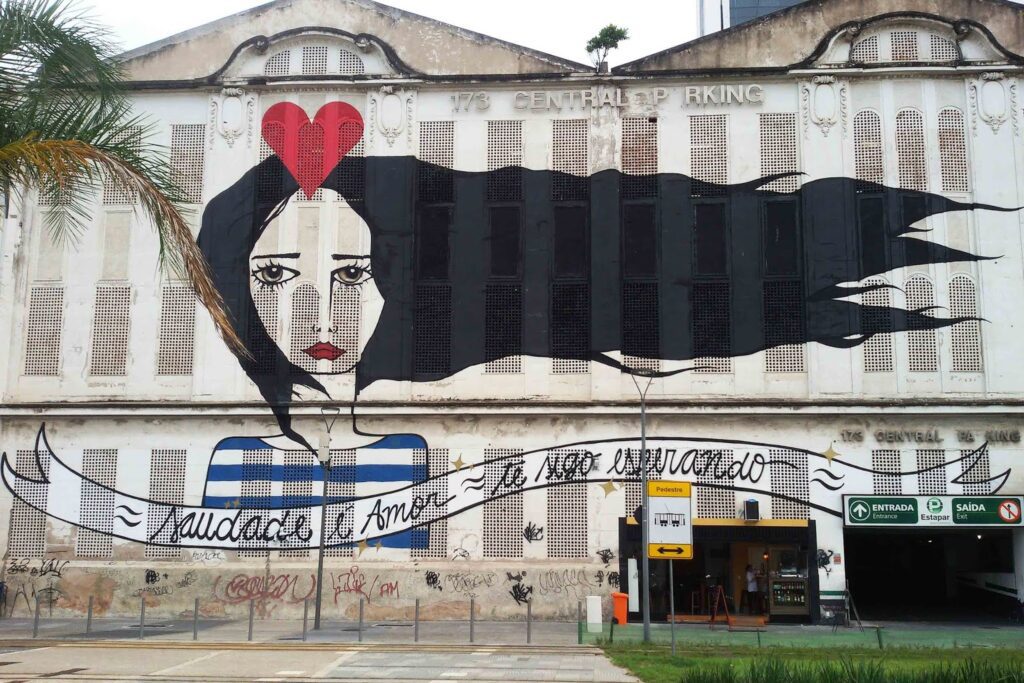
Although these girls are so skinny and deem so airy and fragile, there is something very fierce to them. Maybe it’s the black outlining, maybe the pointy outline. In any case, take their prickly gaze as a warning….never to mess with them.
Here you can check out Ria Wainer’s online shop.
Eduardo Kobra
Yes, Kobra as well: Born in São Paulo in 1975, however, in the poor neighborhood of Garden Martinique. Therefore, no descendence from a dynasty of artists. Nevertheless, with over 500 works painted all over Brazil and 20 other countries around the planet, Kobra is one of the world’s most famous muralists.
But yes, he started as subversive as almost every urban artist, as an illegal tagger. He got arrested three times for his passion. Illegal? Sure! But talented? As a matter of fact, one judge was so impressed by Kobra’s talent that he sentenced him to….paint. He commissioned Kobra to create a mural on the wall of a police station of all places!
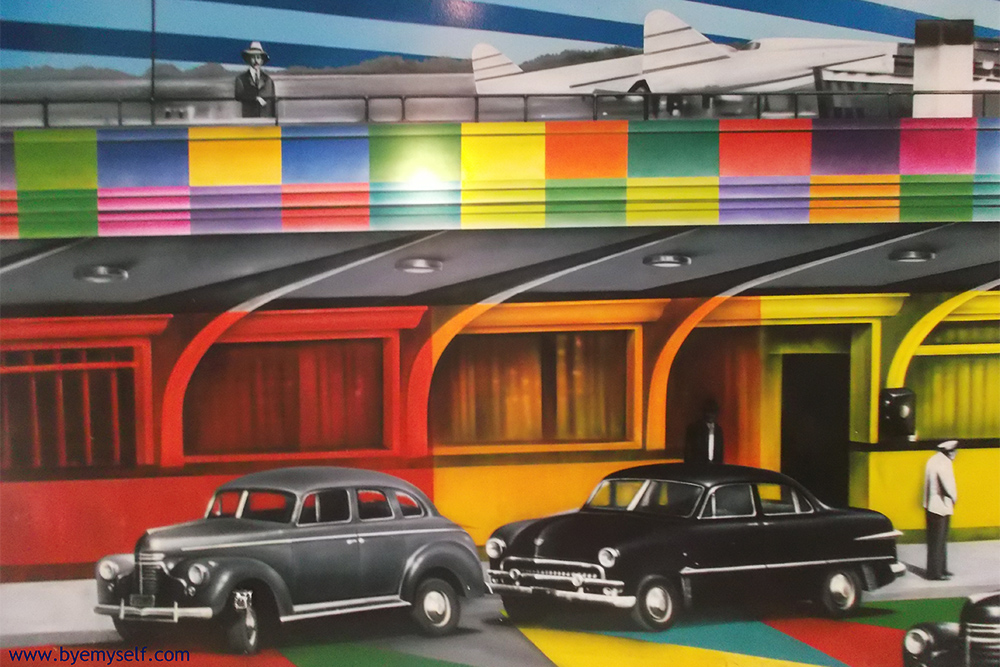
Eventually, in the 1990s, Kobra got the chance to make some money with his art by designing posters and painting toy sets. Expectedly, his talent was quickly acknowledged, hence the jobs got more professional and sophisticated. This is especially very admirable since Eduardo Kobra got no professional training whatsoever.
His asset is exclusively his talent.
Brazil’s Superstar
Today, Kobra is unquestionably most famous for his hyper-realistic portraits of famous people that he paints over graphic patterns of geometric shapes in bold colors.
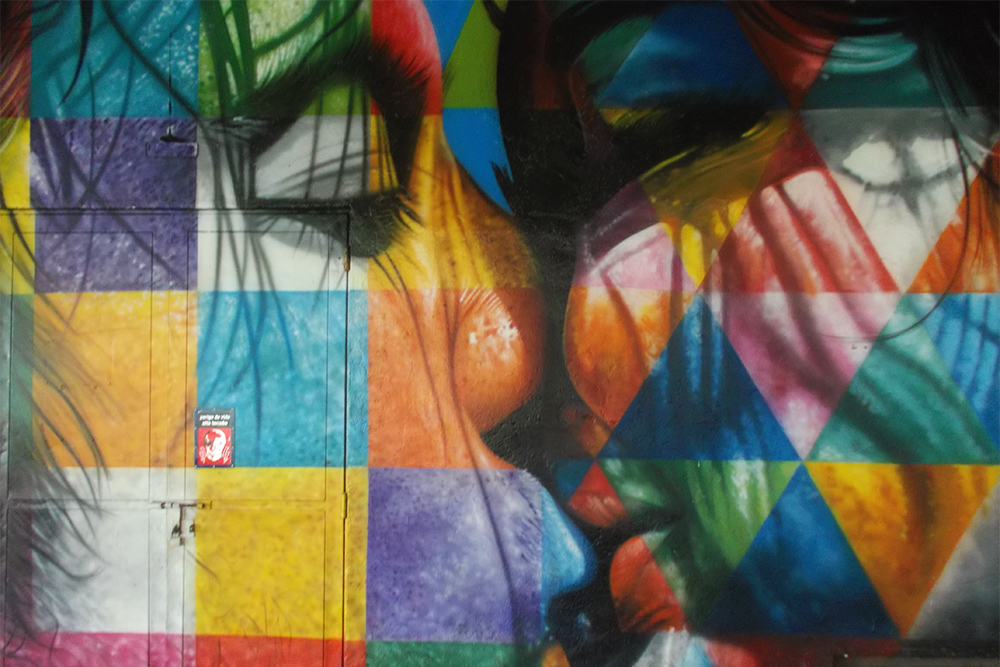
He paid tribute to great Brazilians such as architect Oscar Niemeyer and racing driver Ayrton Senna.
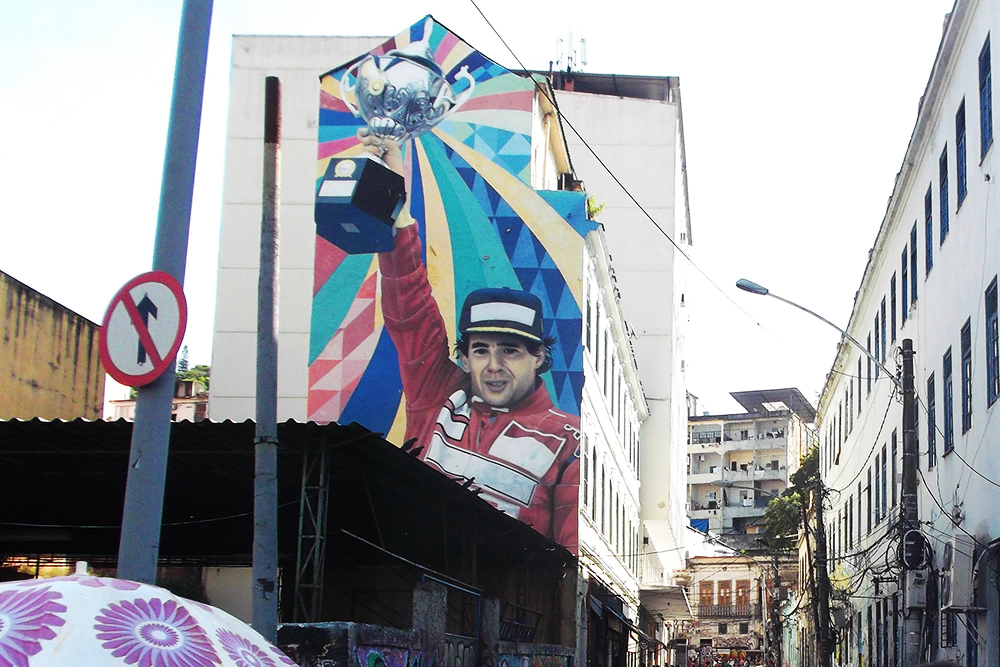
Anyway, slowly but surely he paints his way around the globe by paying tribute to historically important personalities such as Nelson Mandela, Albert Einstein, Anne Frank, Mahatma Gandhi, and Malala Yousafzai. Also, since 2015, there is Bob Dylan in Minnesota and David Bowie in Jersey City since 2016.
Raising the Voice of Color
No, Kobra is not as angry and rebellious as the young men in the Candelaria district in Bogotá. However, he’s not oblivious to what is going on in his country and thematizes social and political problems. For instance, in his hometown São Paulo, he raises awareness for the destruction of the living environment of the indigenous people through his mural Belo Monte.
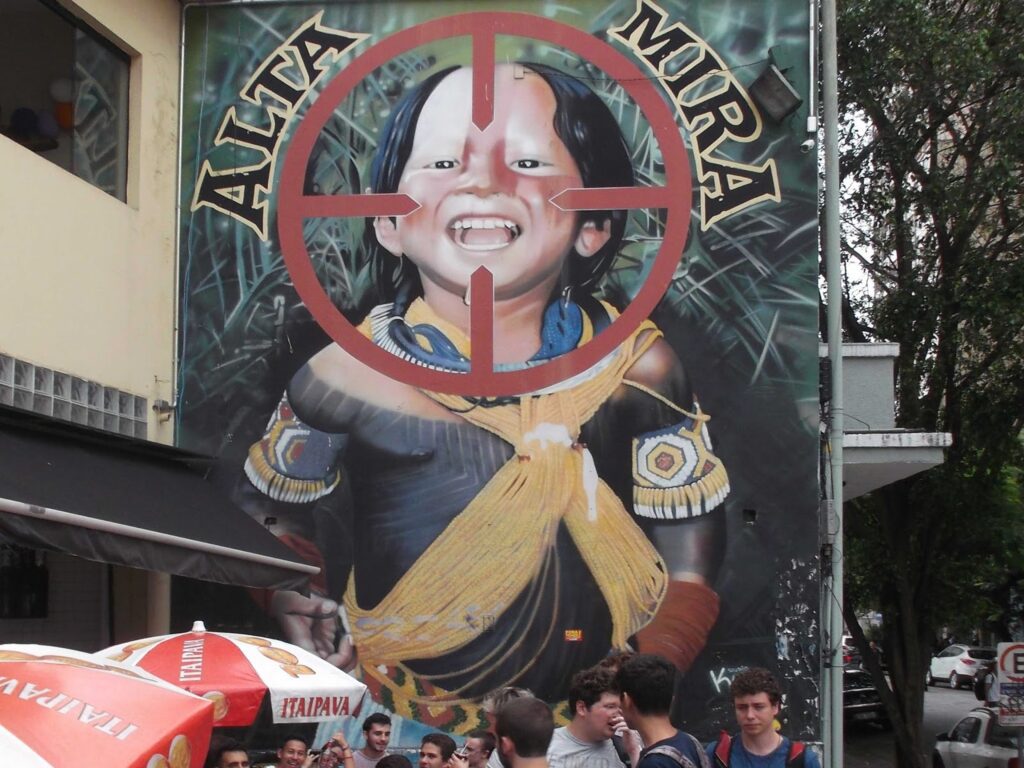
Okay, but how about the awareness of the concrete jungle? As a matter of fact, in 2016, Eduardo Kobra was invited to create a giant mural. Las Etnias, Ethnicities, measures over 32,000 square feet and therefore made it to the Guinness Book of Records.
Of course, by now, it has been exceeded at least twice.
Higher, faster, farther – obviously, very few Cariocas had a reason to celebrate the Olympic Games in Rio de Janeiro. It was a good example of how gigantomania can totally fail. Therefore, for me, it’s really difficult to celebrate an artistic project that was commissioned in the same larger-than-life spirit.
Nevertheless, nobody can dislike the idealist idea of we are all one people behind his work.
So here are the five panels that today embellish Rio’s Boulevard Olimpico.

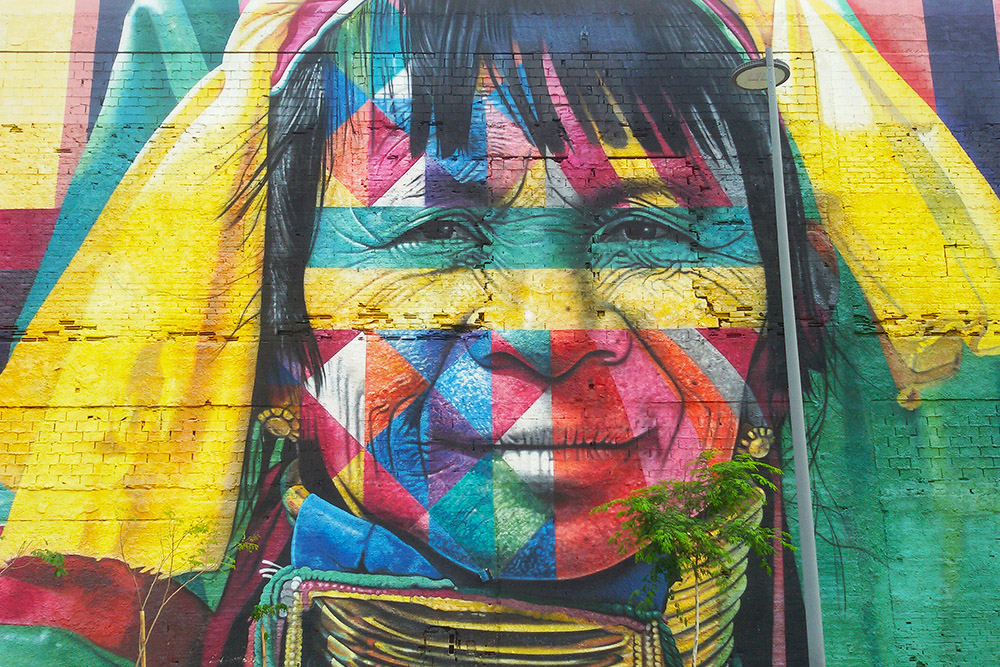
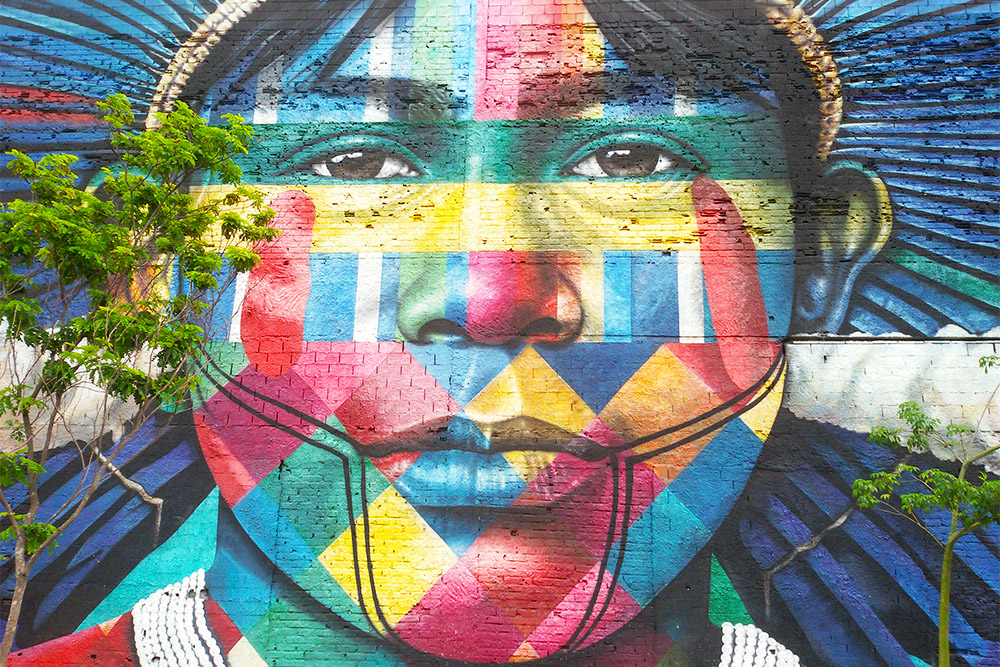

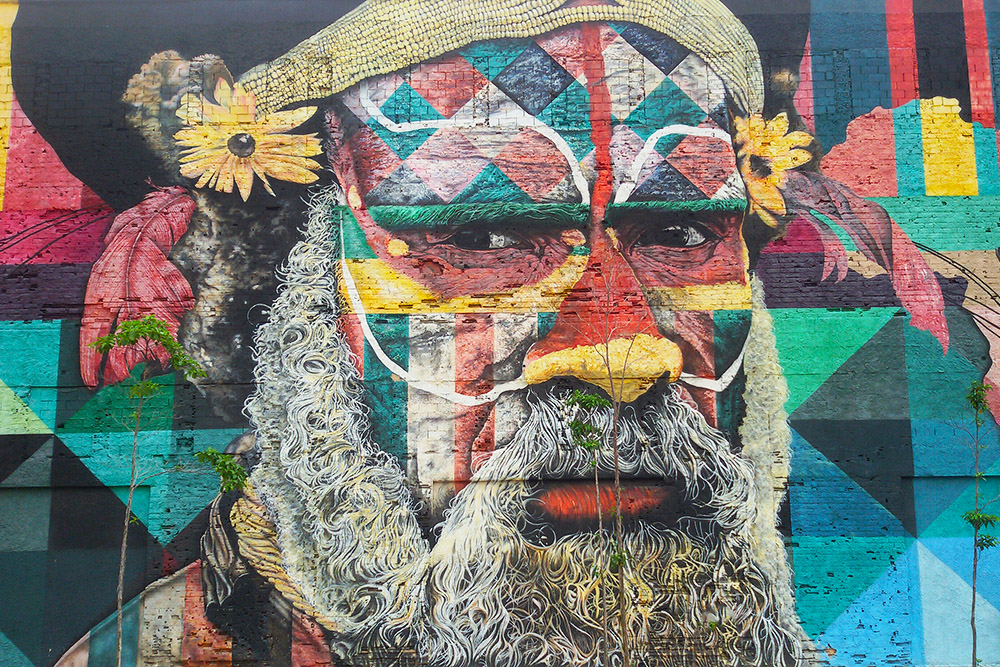
Eduardo Kobra does not have an agent or manager and can be contacted through his website.
Jorge Selaron
The Cristo, the sugar loaf, these ‘colorful stairs’ – apart from the world-famous beaches of the Copacabana and Ipanema, obviously, it’s these three points of interest that every visitor to Rio de Janeiro puts on his to-do list.
Albeit, surprisingly – and sadly – not many of these visitors know about the man who created those stairs, the world-famous Escadaria Selarón.
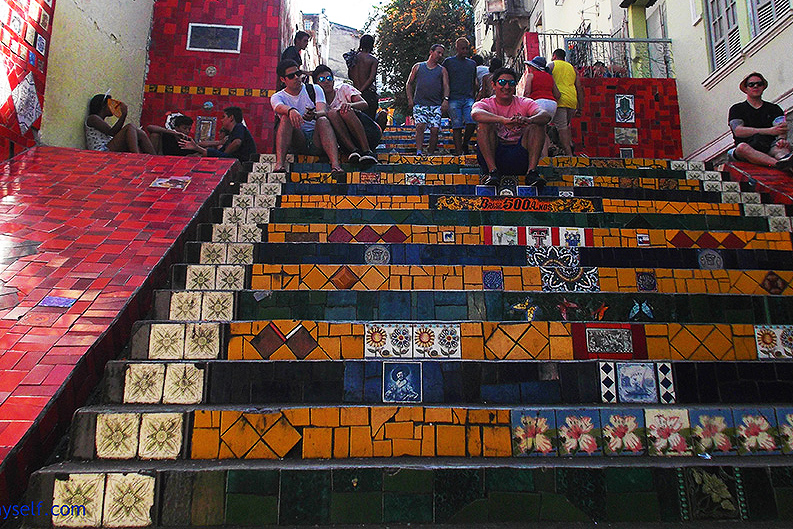
It was Jorge Selarón, a painter and ceramist, born in 1947 in Limache in Chile.
Selarón led a pretty restless lifestyle, obviously. He had passed through 57 countries before finally moving to the Lapa neighborhood of Rio de Janeiro in the 1980s. As a matter of fact, he moved right next to the stairs that eventually should make him famous – and finally become his death place.

After having made a living from selling paintings in restaurants all over the city, Jorge Selarón had begun decorating the 215 stairs connecting Lapa with the Santa Teresa neighborhood with ceramic tiles in 1990.
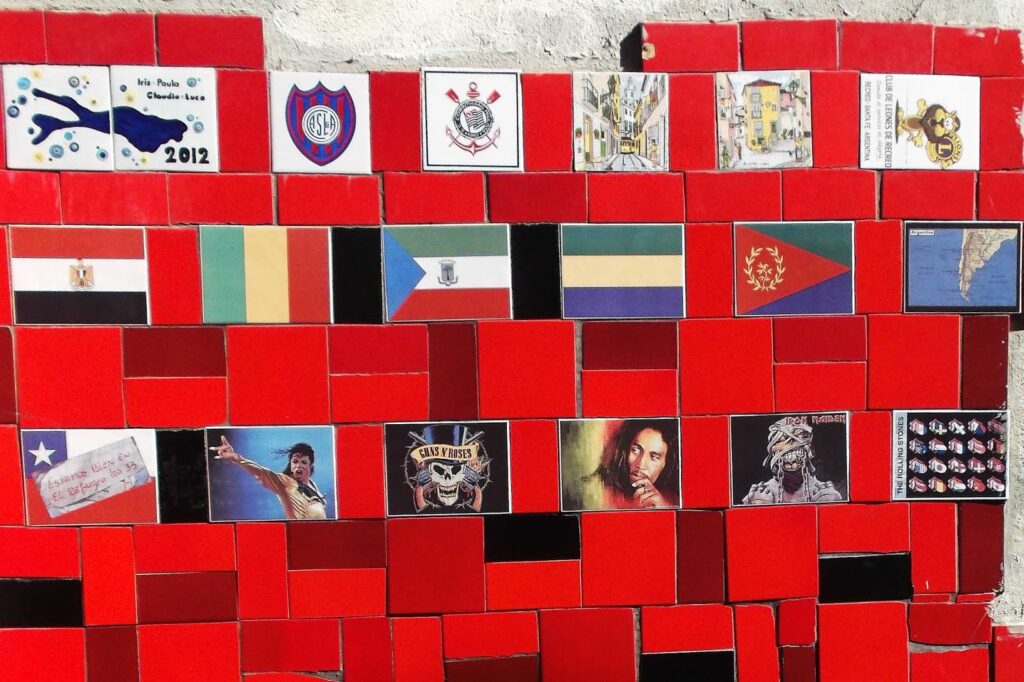
The Sisyphus of Santa Teresa
He considered this sort of Sisyphus work a tribute to the Brazilian people.
Decorating the stairs, he first used tiles and porcelain his friends and supporters donated. Eventually, people from all over the world contributed by supplying him with tiles. Therefore, you find the most incredible – and slightly absurd – motives there. In the end, more than 2,000 tiles from over 60 countries were processed.

It took Selarón twenty years to complete his work – whereby he did not consider it finished. However, the stairs have been a city landmark since 2005. Also, Jorge became an honorary citizen of Rio de Janeiro.
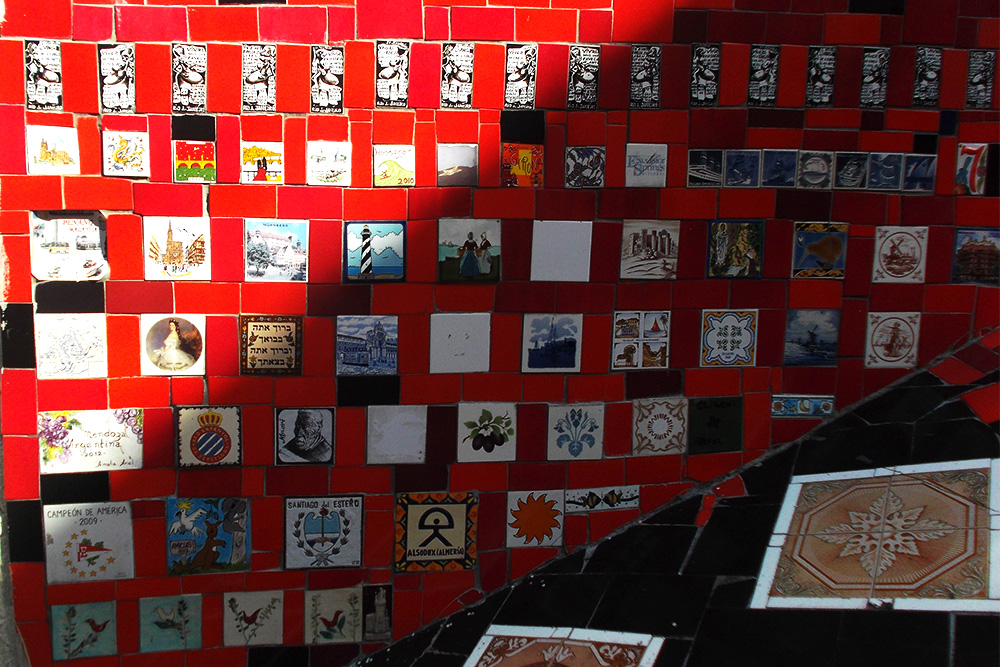
In a documentary from 2010, the artist explained that for him, the stairs would be finished only on the day of his death.

Sadly, this day came unexpectedly and far too early. On January 10, 2013, Jorge Selarón was found dead on the stairs, not far from his home.
The police did not rule out homicide since he had received death threats from a former co-worker. However, friends of Jorge’s claimed that he was depressive so suicide cannot be ruled out as the cause of mortality.
Wanna read more about Brazil?
I’ve written city guides to Rio de Janeiro and Sao Paulo as well as other great places. Just go to my comprehensive post on Brazil.
Pinnable Pictures
If you choose to pin this post for later, please use one of these pictures:



Did You Enjoy This Post? Then You Might Like Also These:
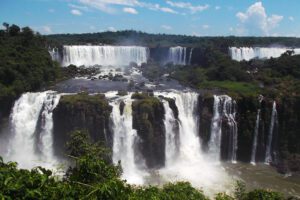


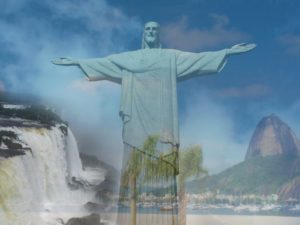

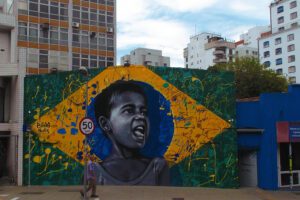
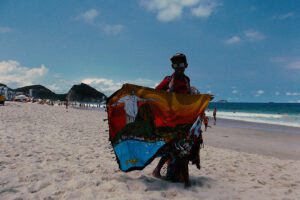

Favelismo sounds like a great movement, loving it. Amazing street art all over town, by the look of it. Sad to hear about the death of Jorge Selarón, but on the other hand, what a hero.
What an amazing pieces of street art by great artists. Street art is great way of promote awareness and they convey deep message.
Absolutely! That’s why I’m very much into urban art 🙂
This blog post had so much great information. It looks beautiful here especially all of the street art!!
These are some of the most exciting and beautiful murals I have seen so far. Exceptionally intriguing and thought-provoking. I would love to see them with my own eyes! I added street art in Rio de Janeiro to my bucket list!
Nnnniiiiccceeeee….artists in Rio really understand the assignment always at hand! These pieces are to die for, truly! Thanks for sharing about them.
Thank you – I appreciate your passion for this art! 🙂
We love street art wherever we travel now. One of the best we saw was the Getsemani street art which is the neighborhood right outside old town Cartagena. It was amazing to see so many unique and diverse styles of art.
So with regards to these 3 street artists in Rio de Janeiro I love how they create in their own ways. I loved Jorge Selarón’s tile work cause who doesn’t recognize those stairs. Now Kobra sees to be really unique too. Love his gigantic murals especially of the faces of Las Etnias. Plus the story of him getting arrested and then being sentenced to paint the Police Station is awesome.
But to me Rita Wainer seems to be my favorite as she creates images that are still quite rough yet impactful. Much like Shepard Fairey who created the Andre the Giant Obey image, her girl everywhere is hers.
Rio is hands down one of my favorite cities and the street art makes it very unique. Love this!
I actually like Sao Paulo better – since there is even more great art there 😉
Rio de Janeiro is one of the places I really want to visit. Cool and colorful murals! Can’t wait to see it!
What i do love about street art aside from transforming places to a visually appealing masterpiece are the powerful message they try to convey. Some artists used this form of art to spread awareness. I have also have seen those creative arts in Malaysia and it was quite a tourist attraction there. I personally love those tiled arts too
Oh my God! What beautiful murals. I have never been to Rio de Janeiro before but I knew it as a carnival city. It is interesting to see this side of Rio de Janeiro. I will surely look out for the street art while I am there.
We sure did love the colourful street art we found in Rio. And we saw nowhere as much as you did! I love all the different topics you see. And how poignant many of the messages are. Especially if you find out more about the pieces. The Kobra LGBTQ mural is stunning. And we loved his pieces we found by the cruise terminal.
Love wall arts and this street art look just amazing. Hope you had great time.
Yes, nevertheless, I enjoyed other Brazilian cities even more.
A very interesting city. I love the streets and you have so many other great artists too. I’d love to visit Rio again.
I hope to return one day, too 🙂
It’s great to discover new artists and learn more about Rio de Janeiro. Thanks for this
Yes, and they have also great art museums.
This street art is so so so beautiful, Thankyou for sharing this really informative and beautiful street art piece
You’re welcome – glad you like it 🙂
Everywhere I go I look for street art and murals like these — they are so beautiful. I especially like to look up the names of the artists and learn more about them. Their art stands as bold statements about their beliefs and vision.
Yes, street art tells you a lot about a place.
This street art is so unique. I love visiting different cities and looking at the street art and murals.
It’s interesting that some places have different thoughts on street art. I learned today, when teaching a class, about a street art project on a block of Detroit that I never knew about. So many places are starting to accept it as art and not vandalism which really lets artists like this shine.
These are all so beautiful! I had no idea that Rio de Janeiro had such an abundance of street art.
These are such beautiful pieces. The artists put in so much detail it is amazing.
That street art in Rio is awesome! I have Brazil on my travel bucket list. When I go, I will make sure to keep an eye out for all this cool street artwork.
WOW! This street art is amazing. I love seeing art in the community that represents different ideas and cultures. These photos are amazing!
Oh wow big fan of street art here and what an awesome variety showcased here. I hope I get to see it in real life one day but in the meantime thanks for the virtual tour 🙂
I love looking at street art, and the ones in Rio de Janeiro look awesome! I really hope I can visit and see it for myself one day 🙂 Great pics!
Louise x
Oooo I am such a big fan of the street art in Rio de Janeiro. I’d love to see it in person. I just know it looks even more vibrant.
What an awesome depiction of Rio. I’m sure you had a great time!
It was quite exciting 🙂
how cute! I like street art, it says a lot of place and it never bores me to explore it. Your list looks fantastic
Same here – it’s far too varied to get boring 😉
I love street art, especially when you discover something new every time you see the piece. Lovely post, thank you for highlighting the artists and their work.
I love the art on the walls. Street arts sometimes can be so good and fun to walk around checking it out
That was amazing, all of those pics are so beautiful.
Wow this streeat art is amazing! Thanks so much for sharing, I really enjoyed the photographs.
I love street art and these are all excellent examples of them and their underlying messages. Kobra did a stunning mural in NYC that I shared on my blog many times. He erased it after a while but I have the photos.
Those pictures are very powerful! I'm a big fan of artists. Thanks for sharing. I felt that I'm traveling with you.
Hats off to all the 3 artists glorifying the streets of Rio. It's a great way to promote social causes. I specifically love the color usage in art by Eduardo Kobra. Just fantastic!
Love love street arts and these are really amazing! Especially those images from Boulevard Olimpico. Such vivid arts and very realistic!
I love street art and these colors of Rio De Janeiro are mind blowing. I loved Ria Wainer's feminine murals and even the Kobra's style of colorful geometric patterns.
Wow! This is Most interesting place to spend the day and enjoy the beautiful views amazing architecture and art.
I love travelling by myself! It is so freeing!!! Thank you for sharing this post!!!
These are fantastic and very creative graffitis. They are truly talented and lots of inspiration making this city more colorful.
Wow, what a fascinating read. Of course, I am aware of Banksy, but these artists are up there with him. Some of the murals have incredible detail and colour. There is definitely an art to street art, if you'll pardon the pun.
Oh my, I am such a big fan of street art. I have to see this!
Very interesting art in Rio! I enjoyed reading about your explanation of some of the history too 🙂
I’ve always enjoyed street arts. I’d love to visit South America one day and see these myself. Thanks for showcasing these artists
So much fantastic street art! My favorites are all the solid red tones. The art of the 2 boys riding the bicycle is delightful. These are talented artists, indeed.
FABULOUS ART shared here. Thank you. I especially love the work of Rita Wainer's – what a great way to enhance the environment of a place.
They do have some outstanding street art! I love it. I normally get around Scandinavia, where there is a ton of things to approve, before you can paint on a wall. Not sure if it is good or not. Because of the complicated process, mostly famous artists get to work on big walls. But at the same time, we miss some smaller local people, who can do something cute.
What stunning street art, and from talented artists too. I've yet to visit Brazil but I'm so inspired too after seeing these awesome murals. Thank you for brining Rita Wainer to my attention, she's incredible!
This looks fantastic, I really enjoyed the artwork, and how it was show casted. As it give the sense of peace and harmony that you have on your trip.
Cool street art and how fascinating to actually meet the artists. I particularly love the work of Eduardo Kobra.
I always find street art fascinating. There's also a posh community in my country where they put art on the empty walls of sky scrapers.
I think street art is beautiful. Not like graffiti of old that had no true form or reason. This makes ugly places, beautiful and more inviting. Takes away the ghetto appearance and adds life.
I like this different angle of exploring Rio. It's not the first thing you think of when you think of Rio. Now people can appreciate the art more instead of just passing through it. Nice!
Good wording of the subject and nice pictures
There is tons of beautiful street art on the streets in California. Can be very beautiful and explain the history of the area.
Interesting post! Very informative, It really helps you realize the importance and meanings behind street art. I loved it.